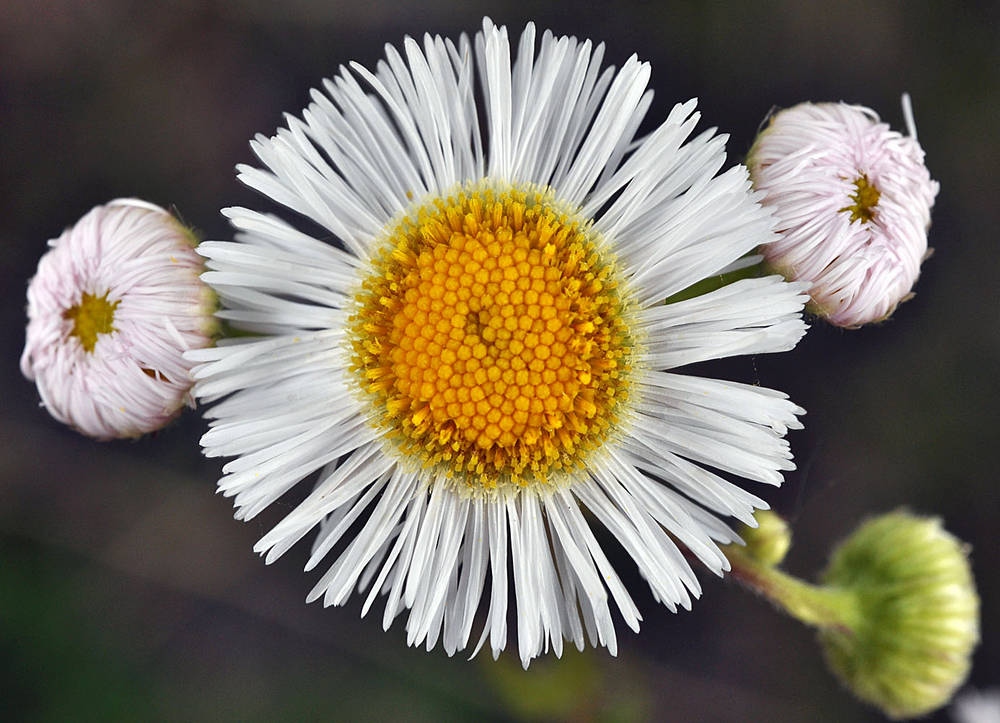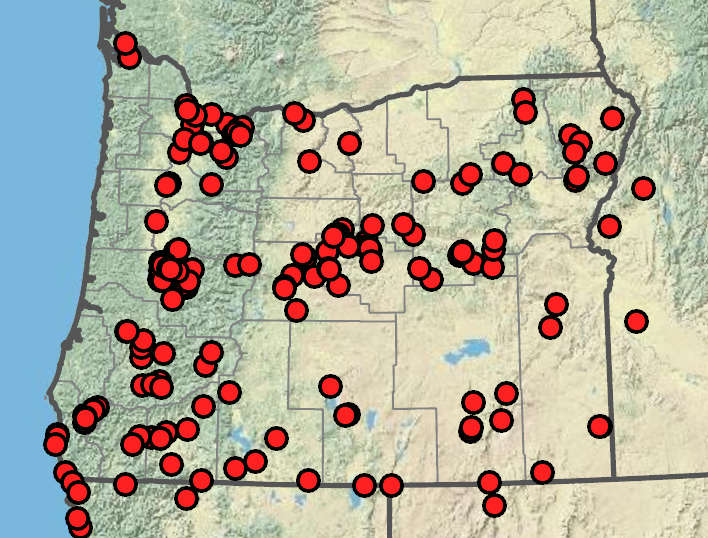Erigeron speciosus
(synonym of Erigeron subtrinervis)
Erigeron philadelphicus
showy daisy, showy fleabane
Philadelphia fleabane
erect;
surfaces glabrous to rarely remotely hirsute, sometimes minutely glandular distally.
erect, sparsely to moderately hirsute to lanate, minutely glandular.
usually withering by flowering, oblanceolate to spatulate.
withering by flowering, oblanceolate to nearly spatulate, 20–170 × 5–35 mm;
margins nearly entire, coarsely serrate, lobulate, or shallowly dentate;
surfaces slightly to moderately strigose or hirsute, eglandular.
lanceolate, 20–80 × 5–15 mm, gradually reduced distally, bases ± clasping;
margins entire, usually long-ciliate;
surfaces glabrous, rarely remotely strigose.
oblanceolate to lanceolate to elliptic or oblong, 5–130 × 3–25 mm, distally reduced, bases clasping;
surfaces eglandular.
3–7 × 11–16 mm.
3–6 × 6–15 mm.
40–115+, lavender to purple;
rays 7–11 × 0.7–1.5 mm.
150–250, white to pink;
rays 2–7 × 0.2–0.5 mm.
2–3 mm.
corollas 2–3 mm.
in 2–3+ series, usually with orange stripe;
surfaces basally hirsute to villous, occasionally minutely glandular.
in 2–3 series;
surfaces sparsely to moderately hirsute, minutely glandular.
2–3 mm, glabrous to sparsely strigose;
inner pappi of numerous barbellate bristles.
1–1.5 mm, sparsely to moderately strigose;
inner pappi of numerous barbellate bristles.
1–5+ in corymb-like arrays, radiate.
(1)3–many in corymb-like arrays, radiate.
=18.
Erigeron speciosus
Erigeron philadelphicus
Conifer forests, moist slopes, riverbanks, wet meadows. Flowering Jun–Sep. 50–2500 m. BR, BW, CR, WV. ID, NV, WA; north to British Columbia, northeast to Alberta, east to NE, southeast to NM. Native.
Disturbed areas, streambanks, fields, meadows, forest openings. Flowering Apr–Sep. 0–1900 m. All ecoregions. CA, ID, NV, WA; nearly worldwide. Native.
James Riser, Stephen Meyers
James Riser, Stephen Meyers





